We may receive a commission when you use our affiliate links. However, this does not impact our recommendations.
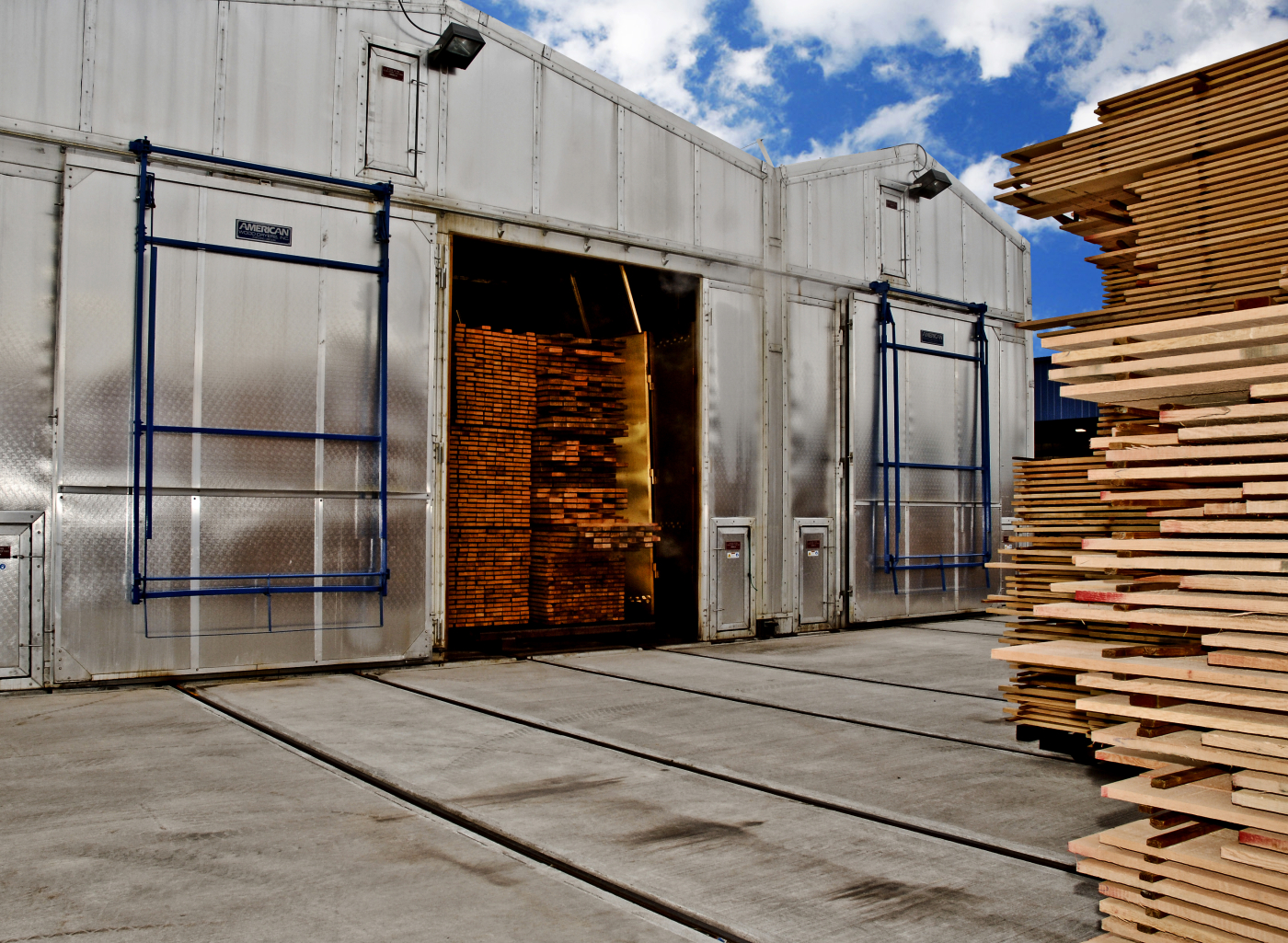
Large, industrial kiln for drying lumber
Every good woodworking project starts with properly-dried wood that won’t cause you moisture issues in the future.
And unless you want picking out wood to be a big guessing game—and a surefire hazard for your project—then it’s of the utmost importance to buy wood that’s been properly dried to the correct moisture content, usually in the 6% to 8% range for most projects where the finished piece will be indoors.
How do you know if the wood is at the correct moisture content %?
Simple—use an accurate moisture meter from a quality and credible manufacturer during the buying process to measure the moisture content (MC). This will save you time and money, as you won’t have to worry about drying wood yourself, which is a process that can be time-consuming or expensive.
But what if you find yourself with wood that may be too wet, or you are simply curious about different drying methods?
You’re in luck.
This article is not only about the “why” behind moisture testing before you buy wood, but it’s also about:
- Why the moisture level of wood is important to consider
- The differences between kiln-dried and air-dried lumber and why you ought to know
So let’s jump right in by talking about moisture content and wood, and why it’s something you should be thinking about.
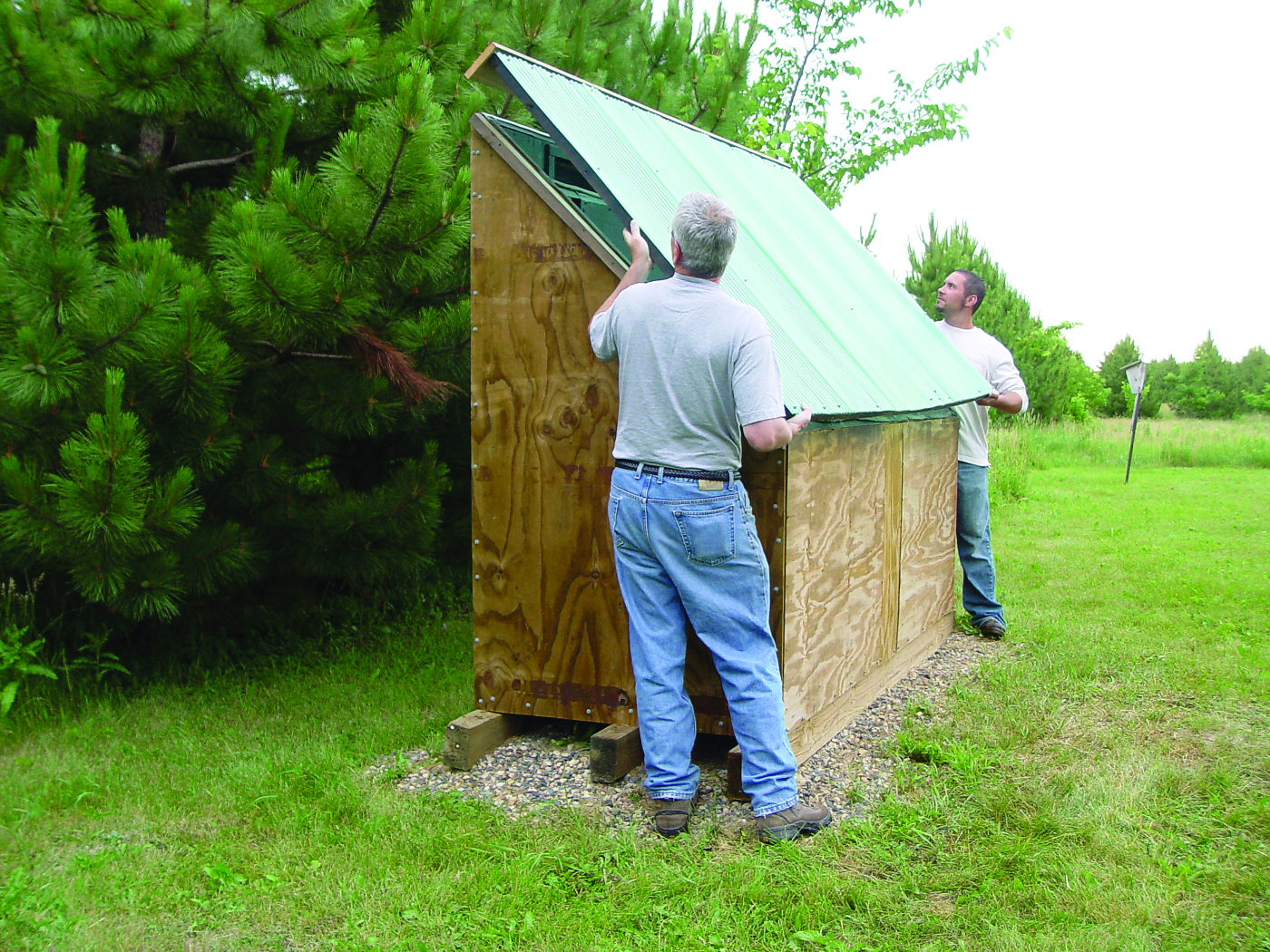
Kiln dry your own lumber on a smaller scale with a solar kiln
Why is the moisture level of wood important?
Wood is a hygroscopic material.
This means it releases or absorbs moisture based on its environment. As it does so, it will shrink or expand, respectively.
All wood is going to change slightly with changes in season or humidity. But if you purchase wood that hasn’t dried to some extent, you run the risk of the wood exhibiting dramatic changes.
Wood shrinkage does not happen until the green (usually 60% moisture content and above) lumber dries to a moisture content in the 28% to 30% moisture content level, which is technically known as the Fiber Saturation Point (FSP). At this point, all of the free water has come out of the cell cavity, and only the bound water in the cell wall is left. It is this bound water leaving the actual cell wall that causes shrinkage to occur.
So if you take wood that is too far above that ideal 6% to 8% moisture content range and make something out of it, it will gradually shrink as well as change the appearance—and in some cases, safety or efficacy—of your project.
Issues caused by shrinkage might look like warping or twisting, joints becoming loose, possibly splitting, adhesives failing, and many other aesthetic or structural issues that would take away from both the beauty and integrity of your project.
The only way to avoid these issues is to use an accurate, quality moisture meter to check the wood’s moisture content.
Your moisture meter needs to come from an experienced manufacturer that also provides superior after-the-sale application and technical support. That way, you can know for sure whether or not the wood has been dried to the appropriate MC.
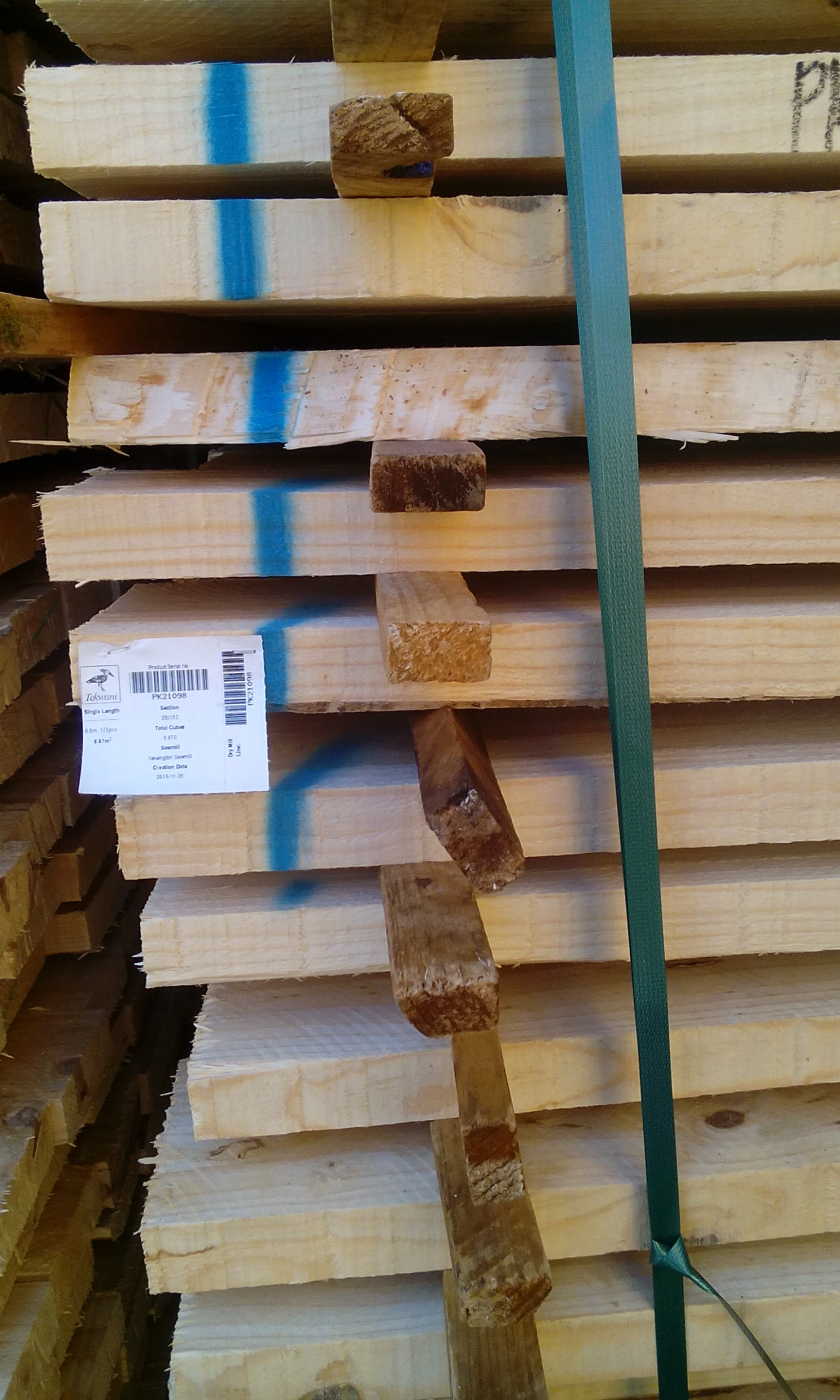
Close up of a lumber stack with spacers for proper drying
So what exactly is an appropriate MC?
In other words, what kind of moisture levels should you look for when shopping for wood?
Let’s find out.
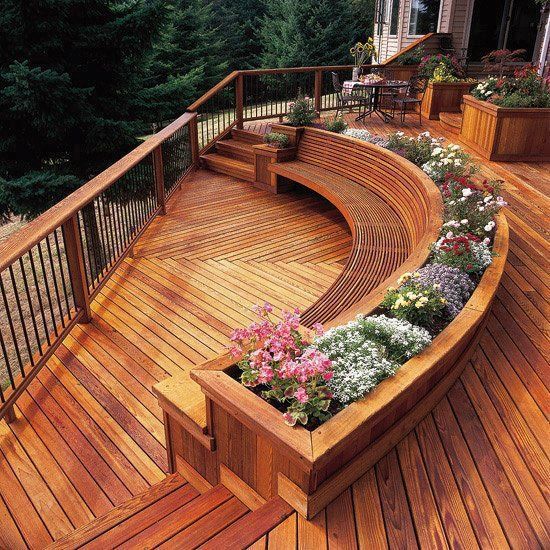
Outdoor projects should have between 9% and 14% moisture content
What is a good moisture reading for wood?
In general, you want a moisture reading between 7% and 19%. However, the exact moisture content will depend on the type of project you’re doing.
As mentioned above, for indoor projects (anything that will spend its lifetime in a fairly well-regulated environment) an acceptable moisture reading usually ranges between 6% and 8%.
For hardwood flooring, 6% to 9% is generally acceptable.
And for outdoor projects, 9% to 14% is a good goal.
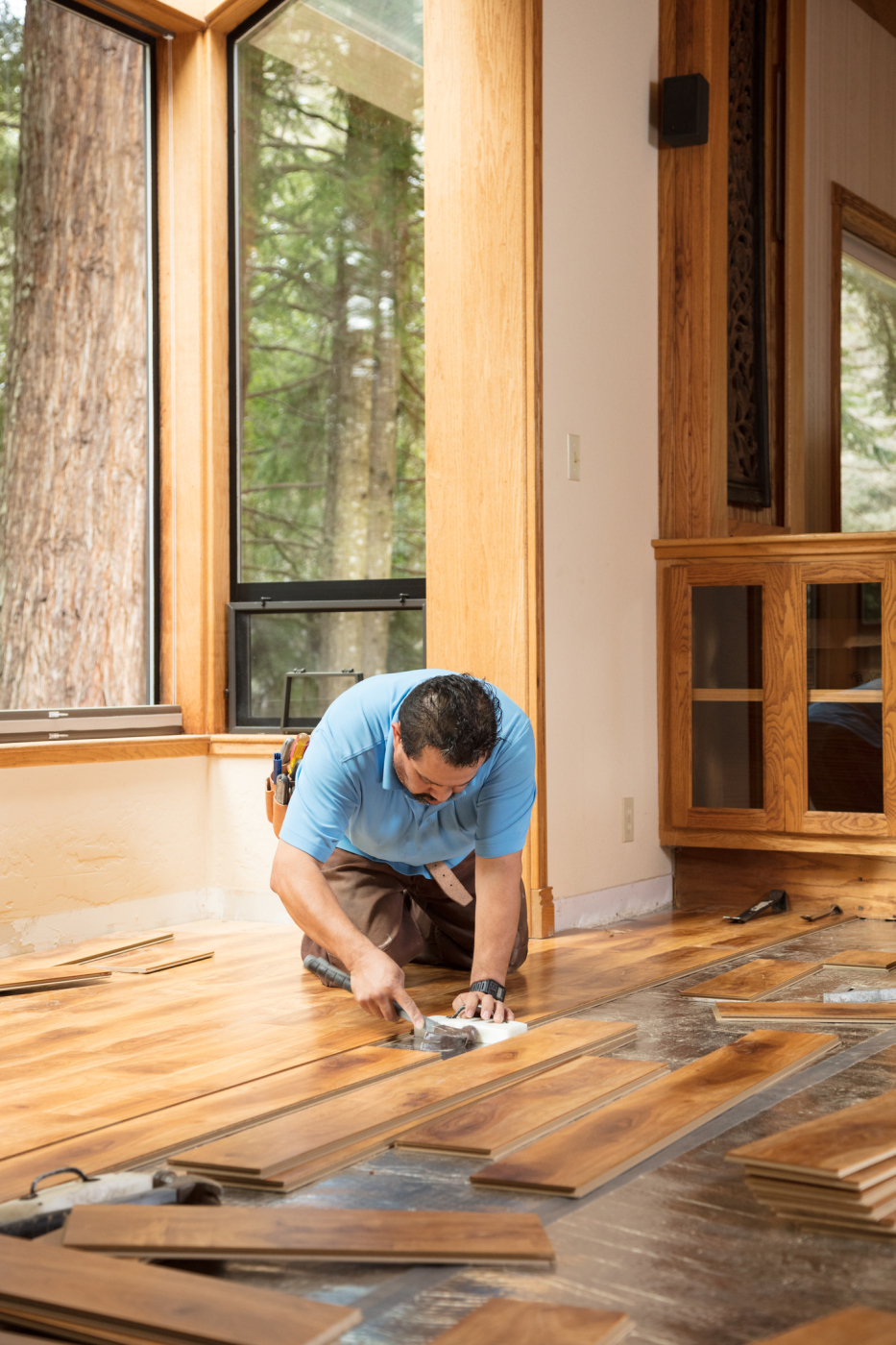
Indoor projects should have between 6% and 8% moisture content
But a more reliable way to know the ideal moisture reading for your project is to consider the equilibrium moisture content of its final location.
This is because wood, left in a particular relative humidity and temperature environment long enough, will have no choice but to equalize its moisture content to that environment. For example, wood left in a 35% relative humidity and 68 degrees Fahrenheit environment long enough will equalize to approximately 7% moisture content.
So it’s important to know this about finding the equilibrium:
Equilibrium moisture content (EMC) varies by region. That means the EMC of Florida is usually around 14%, while it’s around 8% in Arizona.
Even though these numbers might not matter as much if the project will be inside, they will make a difference when it comes to wood transportation or any work done in an unregulated environment.
EMC and your preferred MC are certainly factors to consider for your wood project.
But knowing them is one thing. Actually considering them in your purchase is another. That’s why it’s important to know how to measure moisture in wood.
How do you measure moisture in wood?
The best way to measure the MC of a given piece of wood is with a high-quality moisture meter.
There are a few options for moisture meters, but really, they boil down to two types: pin and pinless, and there are times when one is more useful than the other.
A pin meter will leave holes in your pieces of wood, though they may not be a big deal for some projects.
Generally, however, the most convenient kind of moisture meter for most woodworking projects is an accurate pinless moisture meter.
High-quality pinless moisture meters are fast, reliable, nondestructive, and easy to use, giving you trustworthy readings.
You should also focus on moisture meter brands that have a long proven history of being used by quality-control personnel in wood products manufacturing facilities, such as window, door, and millwork plants that have stringent moisture quality-control standards.
Use your pinless moisture meter to scan the lumber and determine the MC so you can walk away with wood that’s at the proper MC for your project.
Now that you know the ins and outs of moisture measurement, let’s talk about the different drying methods used to get a piece of wood to the proper MC.
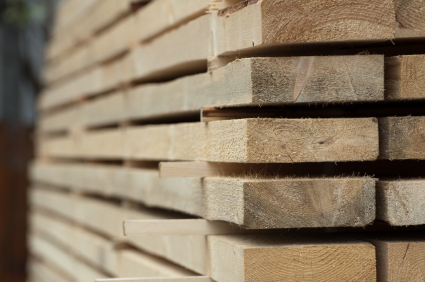
Lumber stacked with spacers for air drying
Air-dried vs. kiln-dried wood
There are two primary types of wood drying methods: air drying and kiln drying.
Air drying is what it sounds like: letting the wood dry naturally in the open air.
The wood is often stacked with spacers in between boards. Because it’s a completely natural process, air drying can take anywhere from 8 to 16 months or more, depending on the wood species and thickness.
Kiln drying, on the other hand, is the process of drying wood in a kiln.
The wood is placed inside the kiln, which is then raised to a certain temperature. Because kiln temperatures are generally in the 120 to 180 degree Fahrenheit range, the moisture is aggressively being forced out of the wood at a rate that is much, much faster than air drying. This means the correct lower moisture content range can be achieved, which is difficult with air drying only.
Despite the faster drying speed, kilns don’t cause much damage to wood because the balance of temperature, air circulation, and humidity is carefully controlled. In fact, steam is often released within the kiln to keep the wood from overdrying, relieving internal stresses on the wood.
When it comes to doing it yourself, air drying may seem like a cheaper option. But it takes so long that unless the timeline for your project is very long (or you’ve been planning ahead for years), it’s usually impractical.
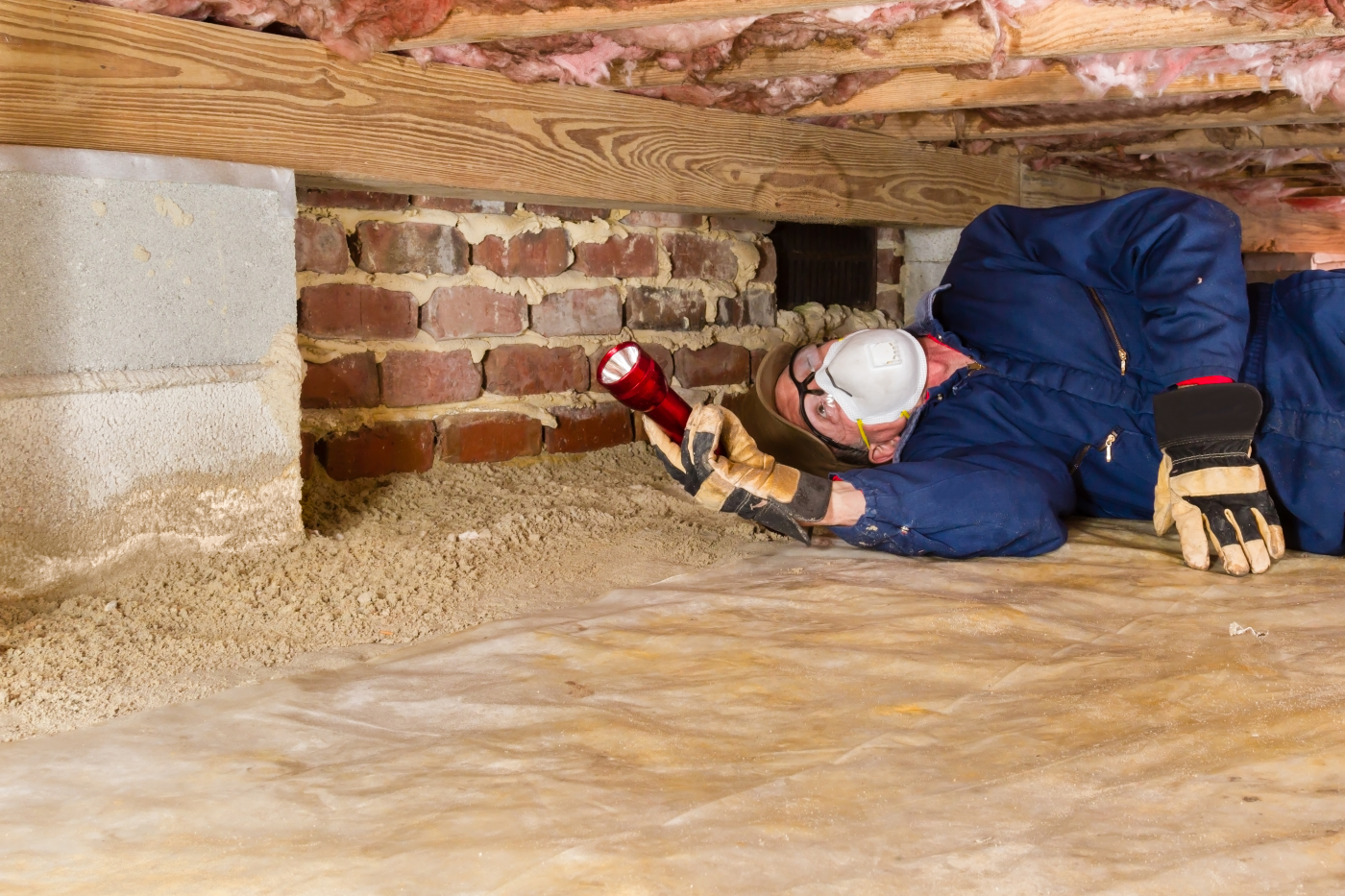
Kiln drying wood can help kill pests that might cause future problems
Advantages of using kiln-dried wood
There are solid reasons why kiln-dried wood is a better choice whenever you are looking to purchase wood for a project.
The first reason is that the high heat of kiln drying kills any wood pests or bacteria, not to mention mold and mildew. You’ll be able to store the wood inside without worrying about pests. And on a grand scale, you’ll keep other tree species safe from diseases that could spread from lumber that has traveled internationally or even over state lines.
Properly kiln-dried lumber also has a more consistent moisture content and, depending on your moisture meter readings, can be used almost immediately. You’ll save time and money when starting a woodworking project.
Because kiln-dried wood generally has a moisture content range much closer to your ideal moisture content percentage, it has less of a tendency to shrink after purchase, meaning you can move forward with your project without worrying about warping, etc.
Lastly, kiln-dried wood may be more cost-effective than air-dried wood.
Yes, air-dried wood may be less expensive upfront. But if you’re buying wet wood, air drying it properly will take a lot of time, effort, and energy, and to repeat, your ideal moisture content level may not even be achievable with air drying if the wood is stacked outside.
It’s a far better option to invest in kiln-dried lumber.
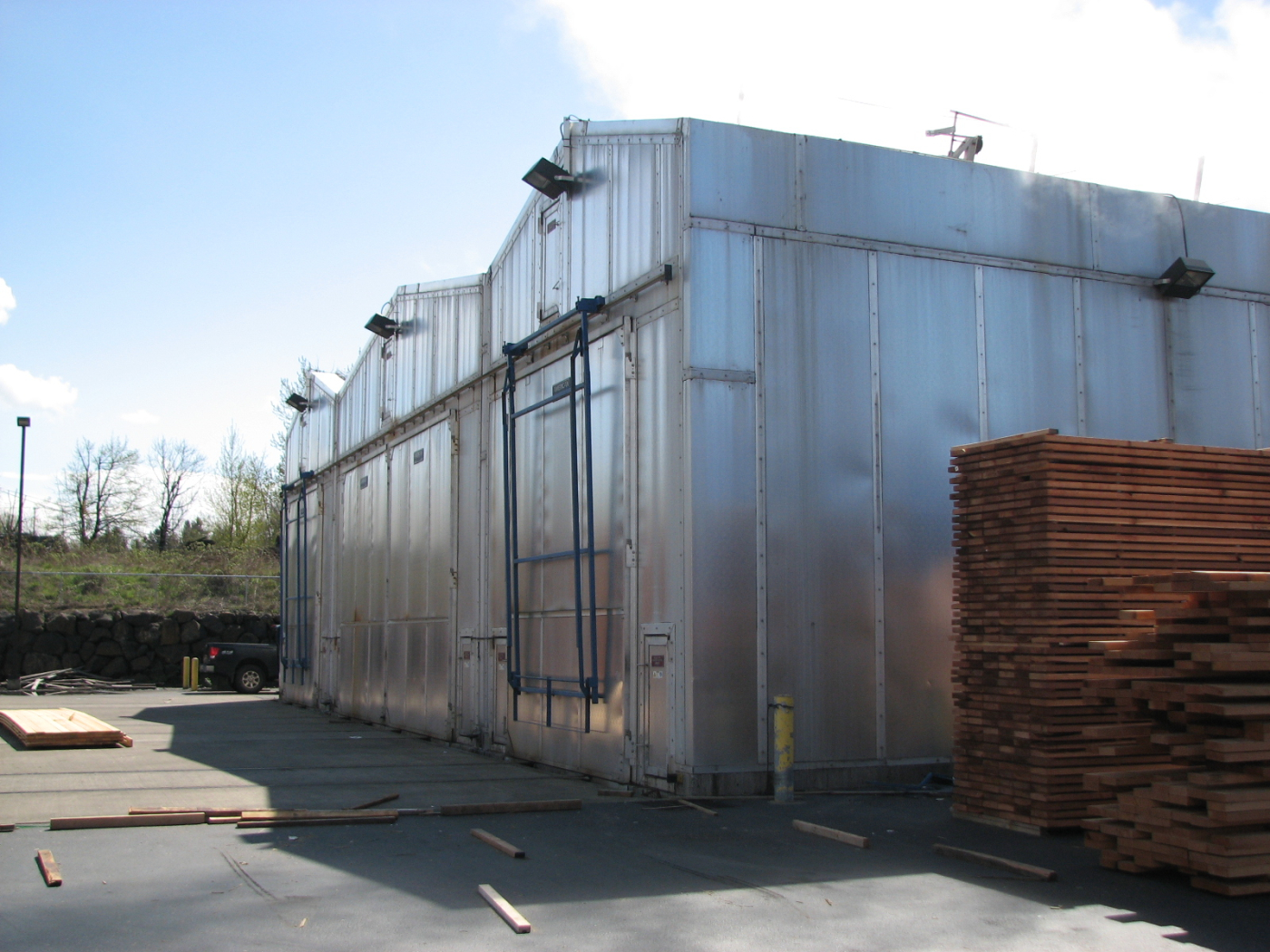
Side view of a large kiln for drying lumber
Moral of the story: Buy kiln-dried and use a moisture meter
Knowing the way that wood is dried can make you a smarter consumer when you’re prepping for your woodworking projects. With this knowledge, you can buy wood that won’t cause you grief further down the line.
But no matter what wood you buy—whether wet, air-dried, or kiln-dried—you’ll want to use a quality moisture meter so that no part of the process is a guessing game. If you can accurately measure the MC of the wood, then you’re setting yourself up for success.
-Ron Smith
Ron Smith is the Forest Products Division Sales Manager for Wagner Meters and has over 40 years of experience in instrumentation, measurement systems and telemetry in different industries. In previous positions, he has served as a regional sales manager, product and projects manager, and sales manager with manufacturers involved in measurement instrumentation. He has been with Wagner Meters since 1993. Call Wagner Meters today at (800) 505-1405 and ask for Ron or visit www.wagnermeters.com.
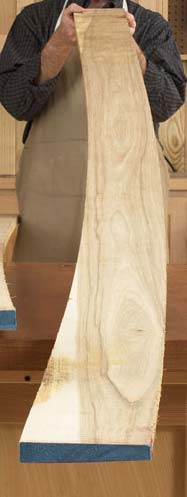
Improper moisture management can cause warped boards.
Here are some supplies and tools we find essential in our everyday work around the shop. We may receive a commission from sales referred by our links; however, we have carefully selected these products for their usefulness and quality.









I disagree. I have been using air dried for years. I air dry it for about 2 years, then I bring it in and acclimate it. I never have case hardened wood, or powdered wood. I have had improperly kiln dried wood twice. The seller did not want to refund me, or exchange the wood. I also like walnut air dried, not steamed. It has better color than the steamed and kiln dried stuff.
My air dried wood measures 12-14%.. While thats the same as 2x4s 2x4s have unequal drying and twist easily. My stacked wood once surfaced seems to be stable, especially if I build with it before it has a chance to do anything. I surface in multiple steps.. rough surface let relax, then finish surface a few days later. It has worked for me..